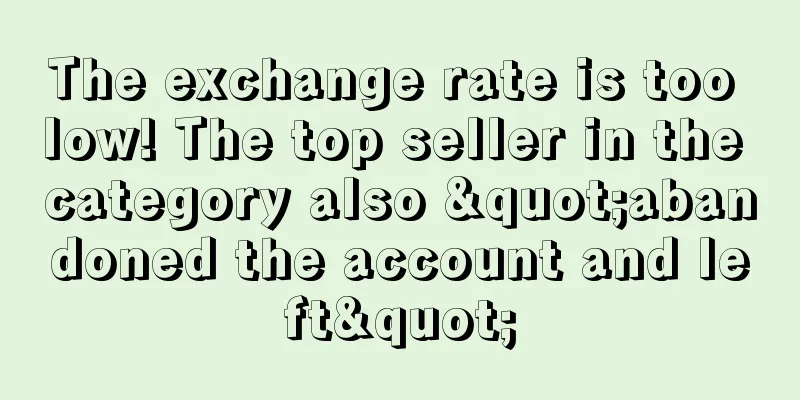The scale of e-commerce exceeds 400 billion, Temu and Alibaba have tapped into new markets!

|
At the end of November 2024, it was announced that Temu had launched its second site in Africa, Nigeria, after South Africa; last month, Alibaba announced at an event co-organized with the Moroccan Association of Exporters (ASMEX) and the Moroccan Investment and Export Development Agency (AMDIE) that it had officially launched its first African e-commerce platform in Morocco.
In May last year , Amazon’s South African site, which had been repeatedly postponed since 2023, was finally announced to be launched. In addition, SHEIN, which officially entered the market a few years ago, and TikTok, whose number of active users is second only to Facebook... What is the charm of Africa, the second most populous continent in the world, that makes major e-commerce giants compete for layout?
With a value of US$55 billion per year , Africa’s e-commerce market is gaining momentum
Currently, Africa’s total population has reached 1.4 billion, accounting for 18% of the world’s total population. According to the 2024 Global E-commerce Market Report released by RetailX, the annual revenue of the African e-commerce market in 2024 will reach approximately US$55 billion (approximately US$402.9 billion) . Although it is far lower than Asia’s US$4.2 trillion and North America’s US$1 trillion, its growth rate still attracts the attention of many companies and sellers.
RetailX predicts that by 2029, revenue in Africa’s e-commerce market is expected to grow to US$113 billion (approximately RMB 8,272.32), with a compound annual growth rate of more than 14%, exceeding other regions in the world .
This result coincides with a report released by digital economy consulting firm TechCabal Insights in October last year. TechCabal Insights' survey shows that the size of Africa's e-commerce market will grow from US$55 billion in 2024 to US$112.73 billion (about RMB 825.86 billion) in 2029.
The industry believes that compared with the almost mature European and American markets, the e-commerce industry in the African market is still in the development stage, so it has higher market demand and less competitive pressure. The rapid growth of the African e-commerce market is due to multiple factors, including rapid population growth, the rise of a young digital middle class, the rapid development of the African telecommunications industry, and the popularity of smartphones. TechCabal Insights predicts that the number of African e-commerce users will reach 518 million by the end of this year.
Data shows that among many African countries, markets such as South Africa, Nigeria, Kenya, Egypt, and Morocco will become the main growth drivers of the region's e-commerce industry due to their relatively mature market environment and consumer base.
South Africa : Statista predicts that by the end of this year, South Africa's e-commerce penetration rate is expected to reach 22.27%, ranking first among African countries ; as time goes by, South Africa's e-commerce penetration rate will not only not stagnate in the next few years, but will continue to rise, and is expected to increase to 34.26% in 2029.
As the second largest economy in Africa, South Africa is also the first stop for Amazon and Temu to enter the African market . It has the most complete transportation facilities in Africa. At the same time, female consumers account for 70% of this market (Jumia data), providing a broad market space for sellers and products whose main users are female consumers.
Kenya : Statista predicts that Kenya's e-commerce penetration rate will reach 16.24% by the end of this year, maintain a steady growth in the next two years, and peak in 2028 (reaching 21.9%), but will slow down in 2029 to 15.7%.
Kenya is not only the third largest economy in Africa, but also the third largest e-commerce market in Africa . The population here is very young , which has also made online shopping a fast-growing consumption method in the local area. It is reported that among the online shopping groups in Kenya, the proportion of people aged 25-34 is as high as 82.4%. Mobile phones, home furnishings, beauty products, men's and women's shoes and accessories are also hot-selling in the local area because they meet the needs of young consumers for personalization and fashion .
Nigeria : Temu's second stop in Africa, and also the largest e-commerce market in Africa . Statista predicts that Nigeria's e-commerce penetration rate will reach 13.25% this year, and will reach 16.4% and 16.25% in 2026 and 2027 respectively; like Kenya, Nigeria's e-commerce penetration rate will reach a peak in the past five years in 2028, rising to 15.79%, and will fall slightly in 2029 (15%).
Although Nigeria is the seventh largest country in Africa, it has the largest population in Africa. As of January last year, Nigeria's population reached 226 million, of which 103 million were Internet users (DataReportal data). The average age of Nigerians is only 17.3 years old, so the younger generation is the main force of e-commerce consumption. This part of consumers is extremely sensitive to prices and is good at using online platforms to find cost-effective products .
The e-commerce penetration rates in Egypt and Morocco will reach 18.69% and 21.61% respectively in 2025, and 22.98% and 25.41% respectively in 2029.
"A hundred schools of thought contend", local and cross-border enterprises advance together
As a multi-billion dollar market with a rapidly growing market size and number of users, Africa's e-commerce industry has naturally attracted many local and cross-border companies.
Among the current local e-commerce platforms in Africa, Jumia, Konga, Takealot and others are well-deserved representatives.
Jumia : One of the largest online shopping platforms in Africa, with products covering multiple categories such as electronics, household goods, clothing, beauty products, and food; currently, its business covers 9 major countries in Africa, and has established overseas warehouses in Nigeria, South Africa, Kenya, Egypt, etc. Data shows that Jumia has connected more than hundreds of thousands of sellers, with more than 1.1 billion monthly visits to the platform and more than 8.4 million active users, and has opened up to Chinese sellers.
Konga : Known for its transparent distribution activities and ability to connect businesses with third-party suppliers. Covering most of Nigeria, it provides users with mobile phones, computers, clothes, shoes, baby products, books and electrical appliances, which can meet the needs of most consumers. It has its own warehouses in major cities such as Lagos, Abuja and Port Harcourt.
Takealot : One of the largest online e-commerce platforms in South Africa, with a wide range of products, including books, electronic products, household goods, fashion apparel, etc.; it has more than 3 million active customers, 95% of whom are from South Africa. It has its own distribution center and parcel pickup points, with sales exceeding US$700 million in the first half of 2023 alone, and has also opened up to Chinese sellers.
In addition, comprehensive e-commerce platforms Mzizzi and Bidorbuy, fashion e-commerce Zando, and second-hand platform Jiji also performed well.
Among African cross-border e-commerce platforms, Chinese e-commerce companies Temu and SHEIN performed very well . In 2024, Temu launched two African sites in succession. Benefiting from the decline in purchasing power caused by inflation, currency depreciation, economic downturn and other factors, Temu quickly became one of the most downloaded applications by iOS and Android users on both sites shortly after its launch; SHEIN became a regular on the Google Play and App Store download charts in South Africa in 2023 with its good reputation and consumer love.
It is worth mentioning that Kilimall, one of the largest B2C platforms in Africa and a Chinese e-commerce platform that grew up in Africa, also performed very well. According to data, Kilimall was founded in 2014 and its business covers many African countries including Kenya, Tanzania, and Uganda. Currently, the platform has more than 8,000 sellers and more than 12,000 stores, with 7.2 million annual active users and a market share of 50% in the entire East Africa.
Although Africa is full of opportunities, it also has problems such as backward logistics facilities and high warehousing costs . However, giants such as Amazon, Jumia, and JD.com are also working hard to build local warehousing and logistics. Amazon cooperated with the Nigerian government to establish multi-functional logistics centers in major cities such as Lagos and Abuja; Jumia announced plans to open new warehouses in Cairo, Egypt and Abidjan, Cote d'Ivoire; JD.com also announced last year that it would add express delivery services to 11 new African countries.
In general, Africa is a market with low competition and huge potential, but it is also a tough nut to crack that needs time to grow. If sellers are really tired of the European and American markets, they might as well take a look here. market platform Blue Ocean |
<<: The price has increased several times and it has become a hit in the United States!
Recommend
Suddenly! Another Amazon seller files for bankruptcy
Recently, another Amazon blockbuster collapsed. B...
"Poor quality" vs "good quality and low price"! Temu's reputation is polarized here
With its popularity overseas, a large number of e...
Take it off the shelves! A wave of infringements on pet products has hit hundreds of stores
Pet products infringement wave breaks out, 154 st...
Crazy killing? The trend of association is still continuing, and the seller's appeal fee starts at 25,000!
Accounts were linked, and a wave of account closu...
What is Smart-Groshi? Smart-Groshi Review, Features
<span data-docs-delta="[[20,{"gallery"...
What is Maximum Mobile? Maximum Mobile Review, Features
Maximum Mobile is the electronic wallet of İşbank...
What is Thuma? Thuma Review, Features
Thuma is committed to environmentally-first thinki...
eBay Italy: Gardening products and outdoor furniture are very popular, with sales increasing significantly
Spring is here, but Italy is still in lockdown an...
What is Eagle Creek? Eagle Creek Review, Features
Eagle Creek is a global tribe of travelers committ...
Indian e-commerce market expected to reach $99 billion by 2024
The recently released EY - IVCA India 2021 Trends...
Indonesian e-wallet ShopeePay launches themed version as Ramadan approaches
ShopeePay, Shopee’s official built-in digital wal...
What is Price Guarantee? Price Guarantee Review, Features
Price Guarantee is a new project launched by eBay...
What is Yiyuncang? Yiyuncang Review, Features
Yiyuncang is an Internet technology company focusi...
What is Gaoliansheng Supply Chain? Gaoliansheng Supply Chain Review, Features
Shenzhen Gaoliansheng Supply Chain Management Co.,...
Strong momentum! Vietnam's fast-moving consumer goods market will grow by 6.4%
The fast-moving consumer goods (FMCG) industry in...









